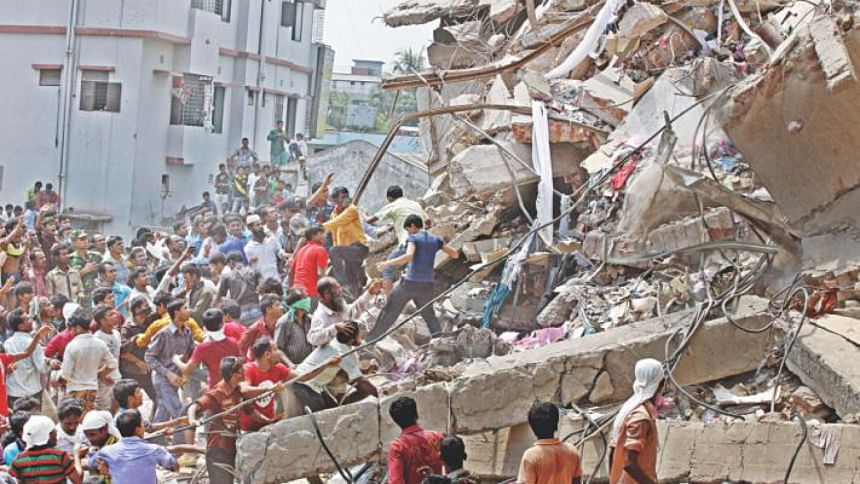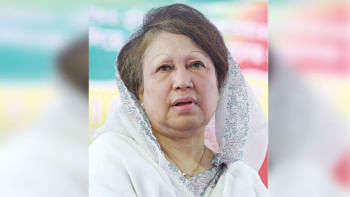Over half of Rana Plaza survivors' health deteriorated: Survey

Health condition of an increased number of Rana Plaza survivors has worsened, said a survey by ActionAid Bangladesh (AAB).
The survey said 56.5 per cent of survivors reported deteriorating physical health condition, up from 14 per cent the previous year, the AAB said in a press statement today.
The study, which the AAB has been carrying out a survey for the last several years, comes ahead of the 9th year of the Rana Plaza tragedy. On April 24, 2013, the nine-storied Rana Plaza building in Savar collapsed killing 1,136 workers, mostly garment workers, and injuring over 2,500 others.
One of the worst industrial disasters raised huge public outcry locally and globally regarding working conditions and workplace safety.
Conducted among 200 survivors, the AAB said Rana Plaza workers complained of waist pain, headache, pain in hand and leg, and back pain as some of the major problems.
"The trend of previous surveys shows that the physical health status of the survivors was slowly improving but due to Covid-19 their suffering got worse," said the AAB.
In terms of psychosocial health, 48.5 per cent of survivors are still in trauma in comparison to 12.5 per cent of survivors last year.
The unemployment rate also remains high among the Rana Plaza victims.
The current unemployment rate of the survivors is 53 per cent while 47 per cent of survivors are engaged in various types of wage and self-employment.
The AAB said of the unemployed, 67 per cent of survivors are unemployed due to bad physical condition and 10 per cent have mental trauma.
"Survivors tend to change work frequently as their physical conditions do not allow them to work for long periods at a time," it added.
The study said 14.5 per cent of survivors have returned to garments with another 8 per cent involved in tailoring while many of the survivors shifted to other professions like domestic work, day labour, farming, agriculture, sales and driving.
The AAB said found that the income of most of the employed survivors drastically decreased due to the impacts of the Covid-19 pandemic.
Some 63.5 per cent of survivors said they had difficulty to buy food for their family every day during the pandemic because they did not have the money to buy food.
Just over half of them said they could not pay their rent, and more than one-fifth said they couldn't afford childcare.
Some 46.5 per cent of survivors had to take out a loan to manage their family's food and other belongings during the pandemic, said the AAB release.
The survey also found that the household income of 36 per cent of Rana Plaza survivors was less than Tk 5,000.

 For all latest news, follow The Daily Star's Google News channel.
For all latest news, follow The Daily Star's Google News channel. 



Comments